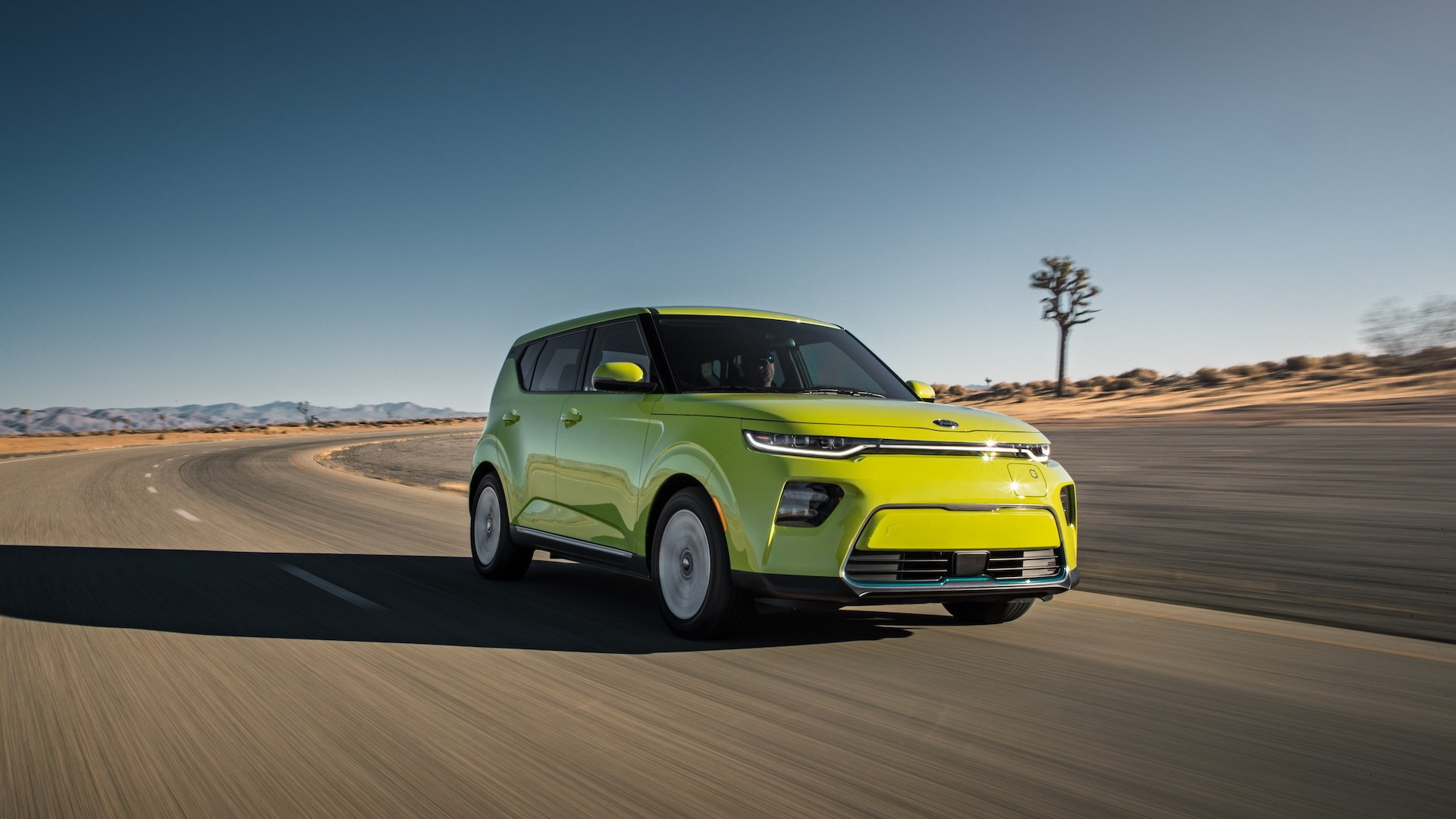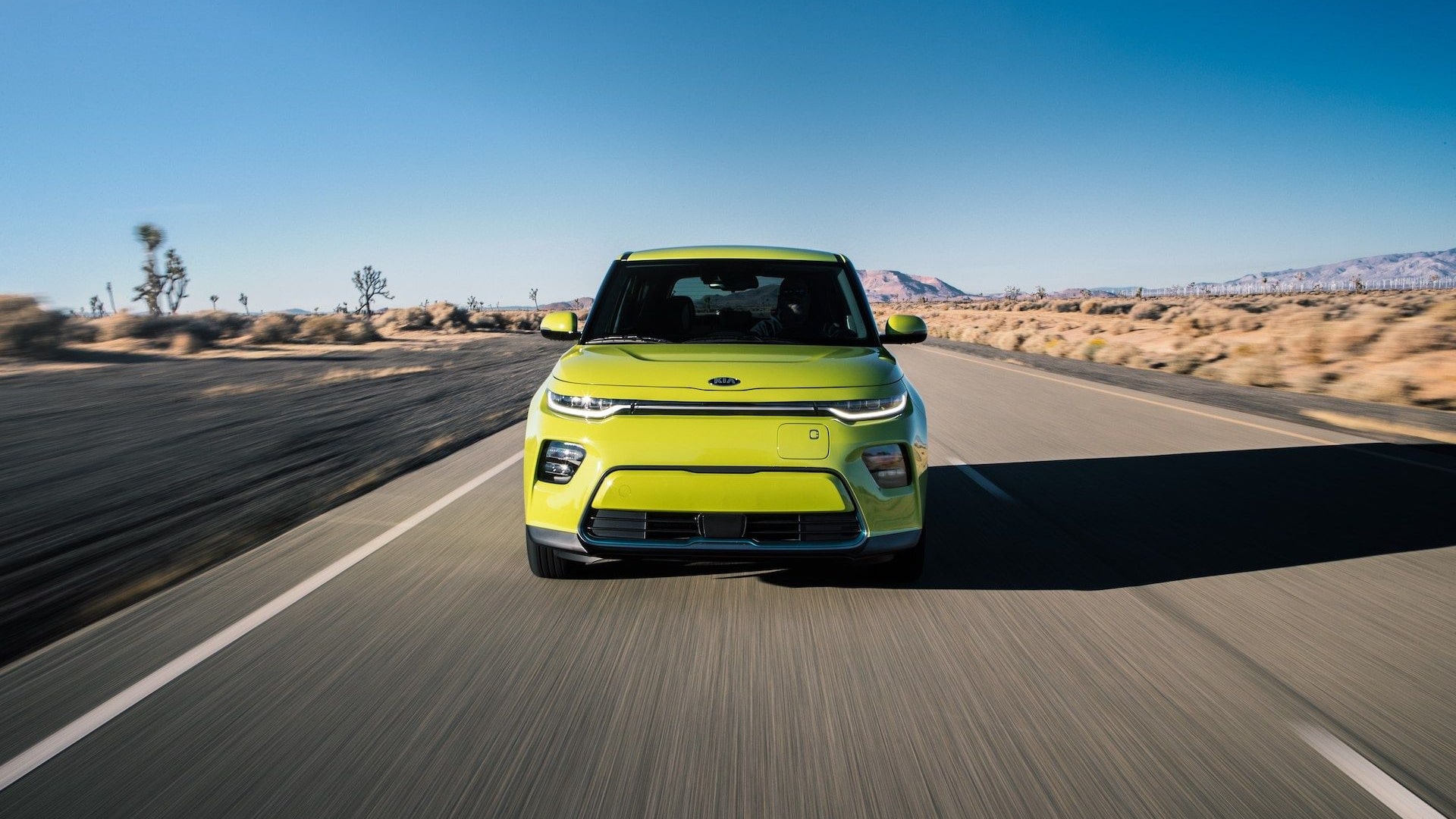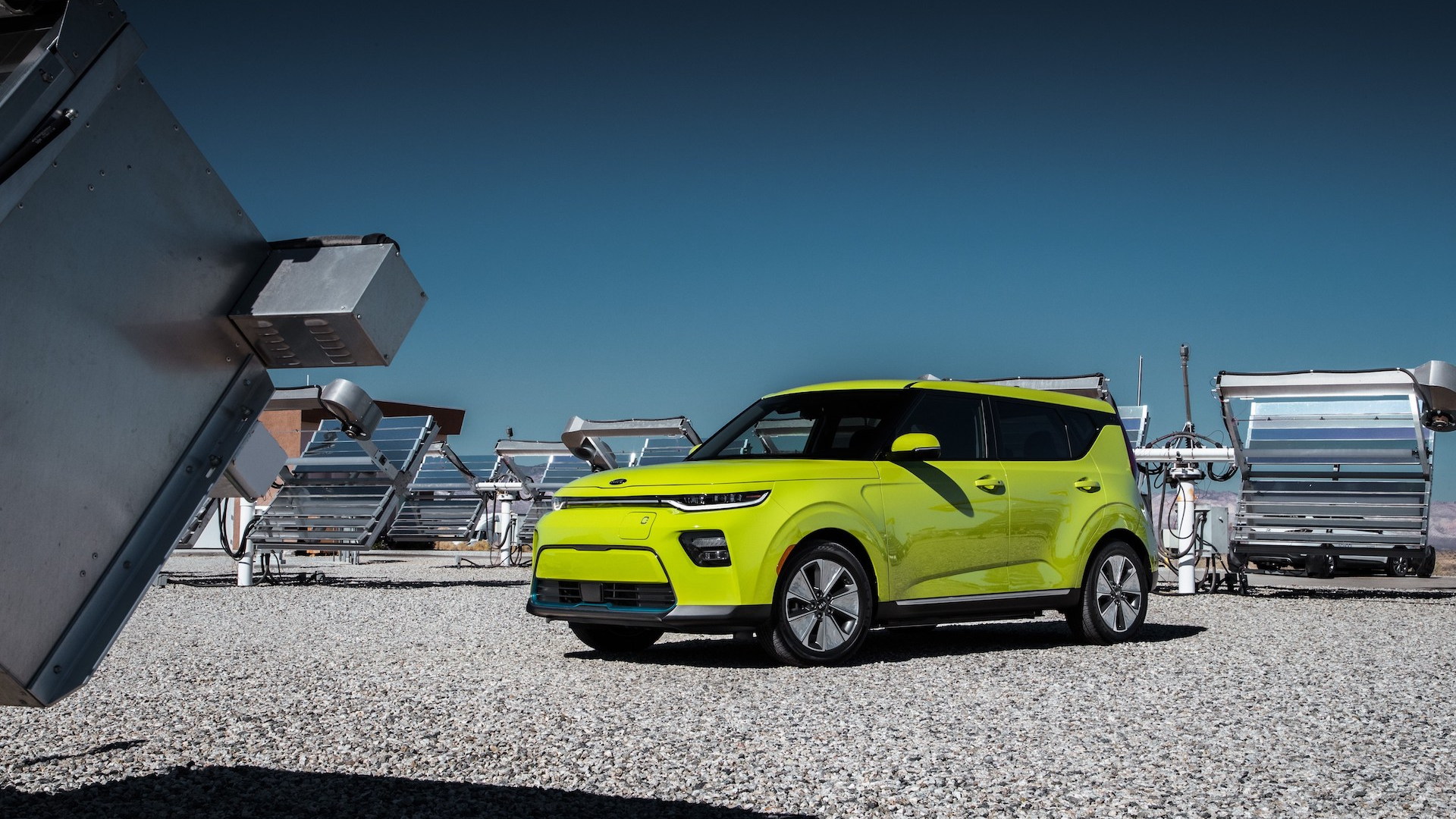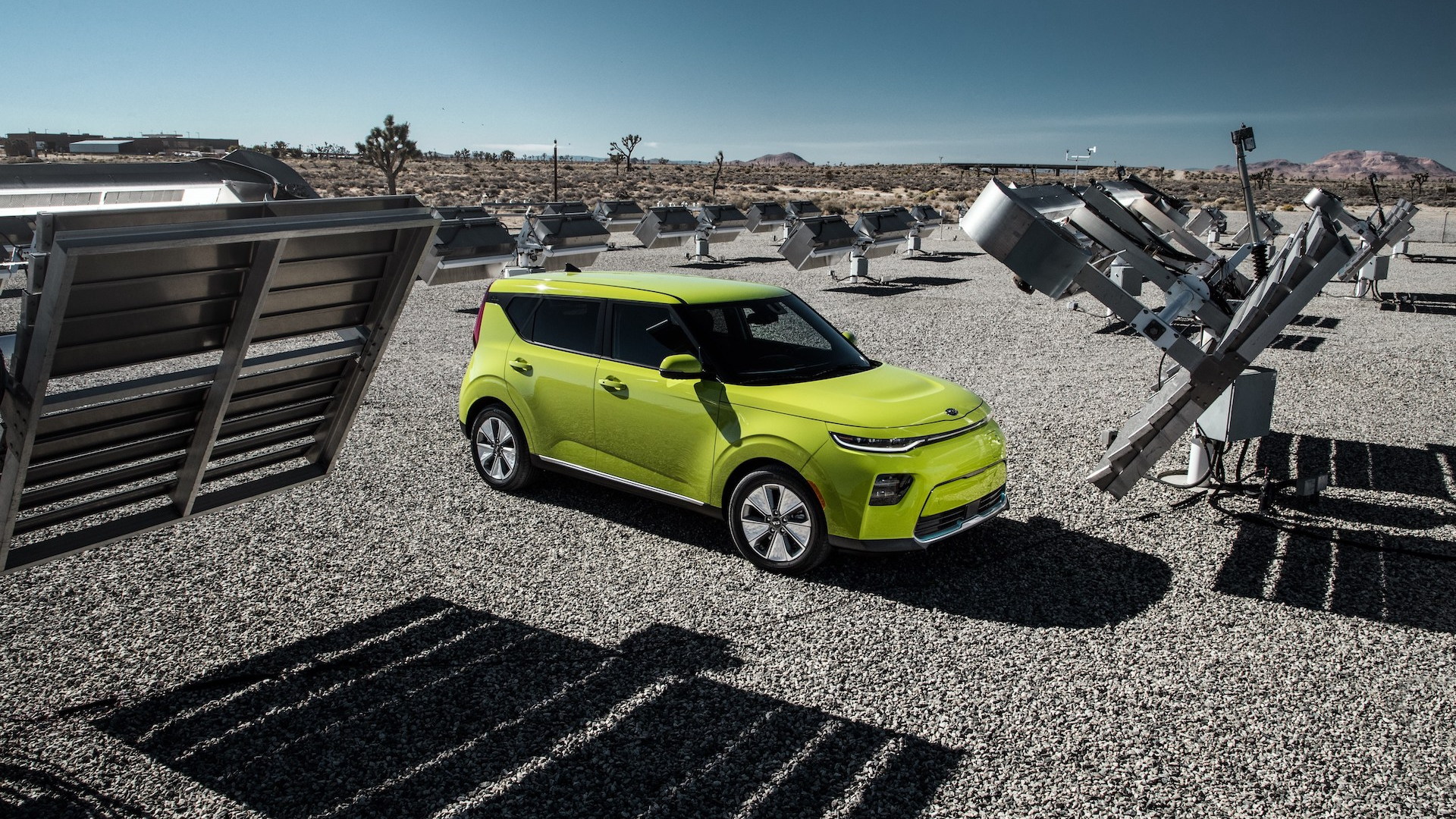In just one model year, Kia has more than doubled the rated driving range for the Soul EV.
The 2020 Kia Soul EV, which is expected to reach dealerships this spring, will go 243 miles on a charge—four more miles than the Kia Niro EV—according to the EPA, in ratings that were released earlier this week.
DON’T MISS: 2019 Hyundai Kona Electric: first drive of affordable 258-mile crossover
The Soul EV, like two other vehicles from Kia and its sister company Hyundai, the Kia Niro EV and Hyundai Kona Electric, comes with a 64-kwh battery pack. It’s closely related to the Kona Electric and built on a version of the same global small-car platform, but it shares its battery pack with the Niro EV.
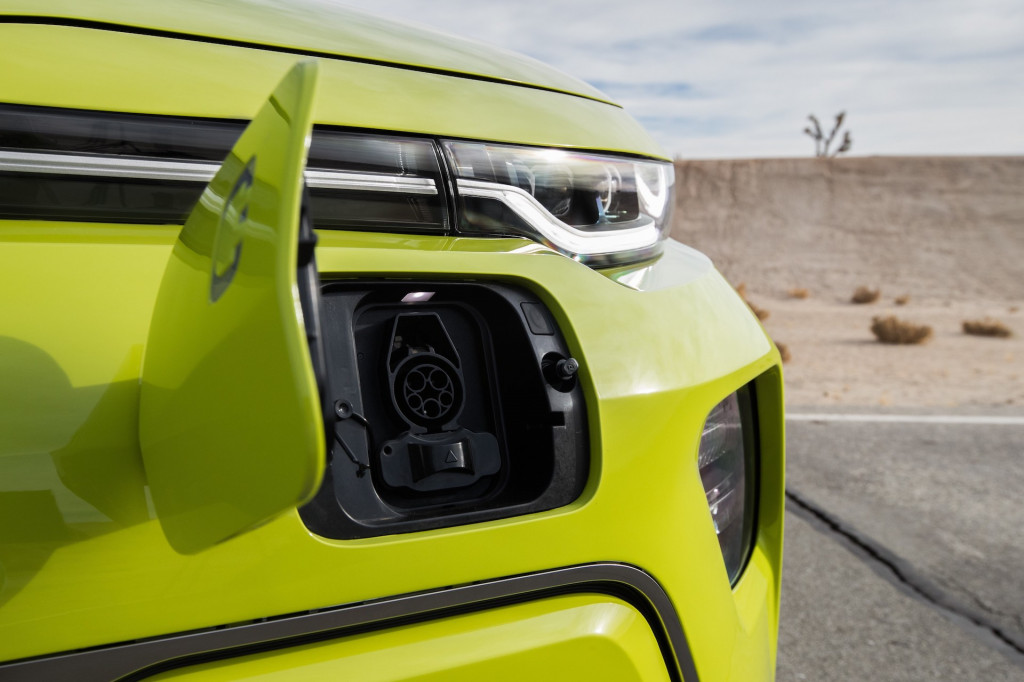
2020 Kia Soul EV
While each of these 64-kwh liquid-cooled packs have five large modules of pouch cells, with three oriented lengthwise under the passenger floor and two stacked crosswise under the rear seat area, the key difference is that the Kia models use cells from SK Innovation and the Hyundai uses LG Chem cells.
The outgoing Soul EV offered just 111 miles of range from its 30-kwh battery. And it had already received a boost from 27 kwh in 2018.
CHECK OUT: 2020 Kia Soul EV has more punch, faster charging, and a lot more battery
The new Soul EV is more energy-efficient than before, too, as its EPA combined rating is now 114 MPGe, versus 108 MPGe before.
The key to its slightly lower range versus the Hyundai Kona Electric (258 miles) is in the city-cycle “fuel economy” results that are used for that official range calculation—127 MPGe for the Soul EV, versus 132 MPGe for the Kona Electric. That could result from slight differences in weight, tuning, or from those different battery cells (or all of the above.)
The Soul EV now also offers a longer driving range than the Chevrolet Bolt EV's 238 miles from its 60-kwh pack.
READ MORE: 2019 Kia Niro EV: first drive of 239-mile electric crossover
Charging is another way to look at it. Like the Niro EV, the Soul EV will get 100-kw CCS (Combo) DC fast charging that will be significantly quicker than the Chevrolet Bolt EV’s official 50-kw charging, and even a bit quicker than the Kona EV’s charging, which tops out around 70 kw.
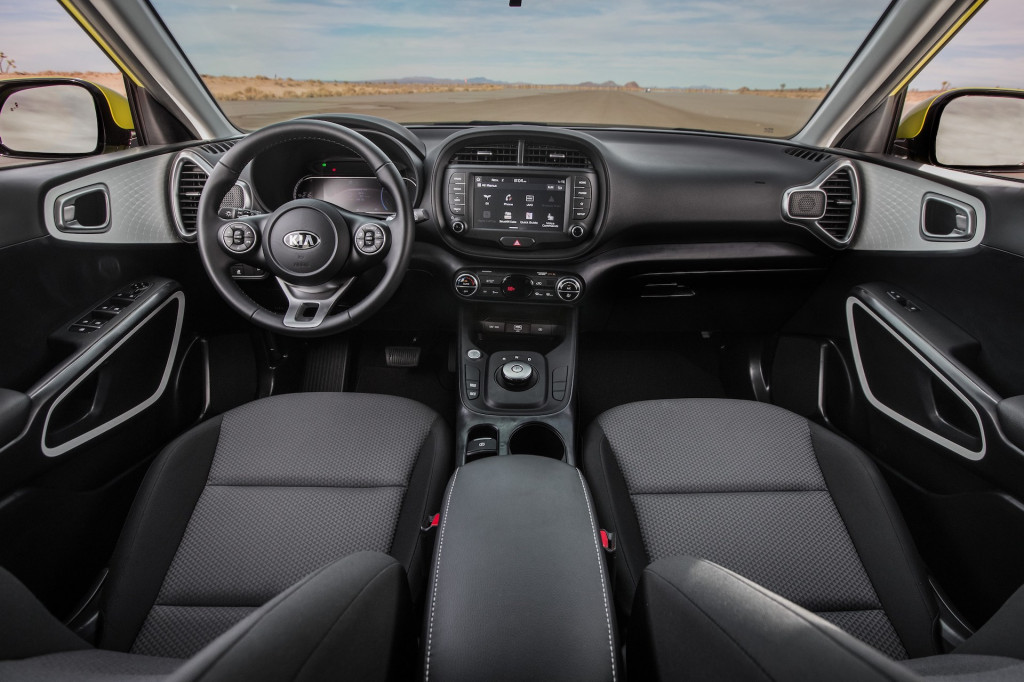
2020 Kia Soul EV
With all these numbers so close, purchase decisions will come down to the features and packaging of these models. With much-boosted power and torque (201 horsepower and 291 pound-feet, respectively), a new 10.3-inch touch-screen system, and more active-safety features, this little electric urban warrior now looks set up for more than just the city.
